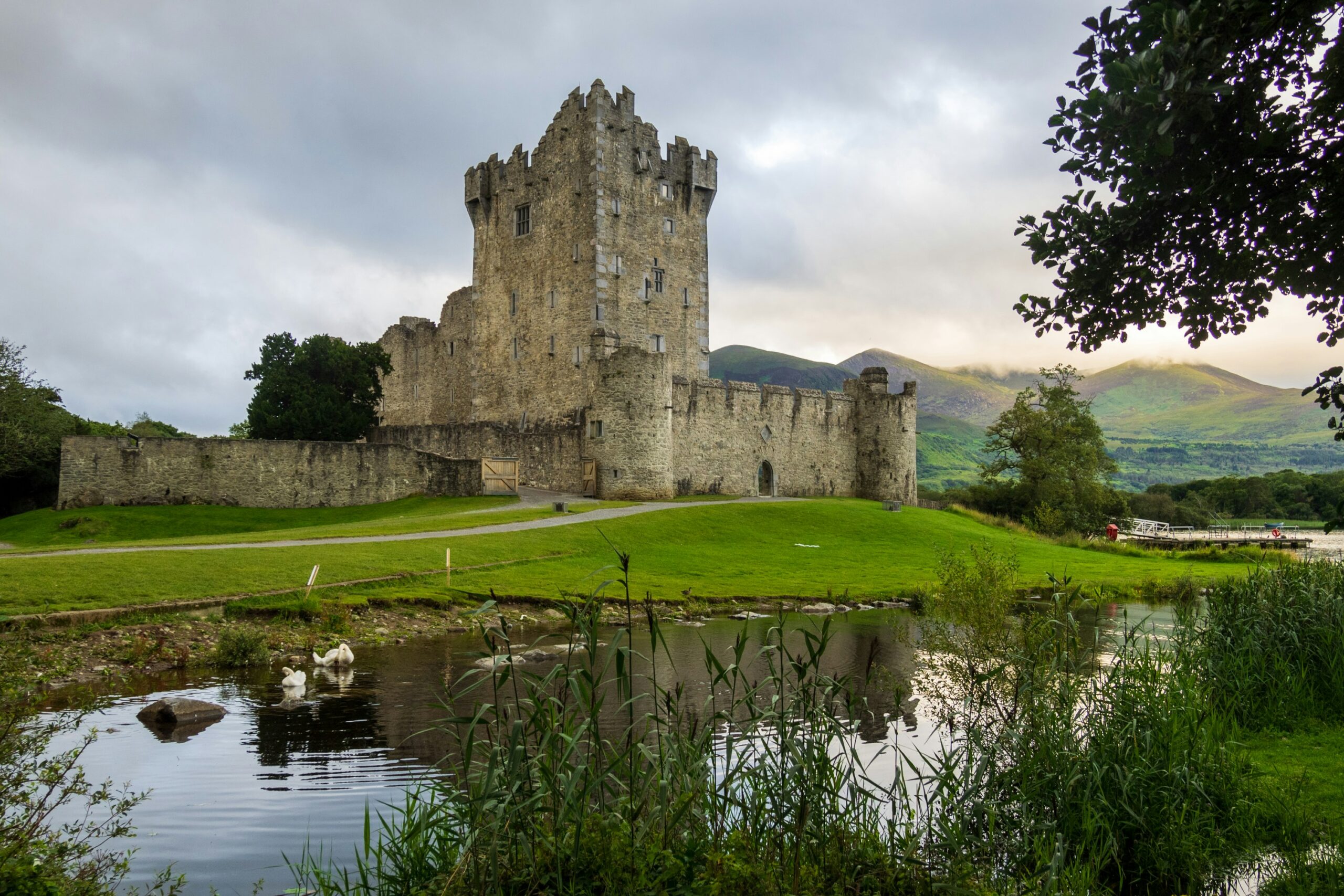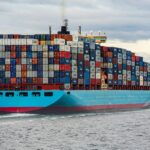“The water’s very low!” says Feargus, stating the obvious, as we run aground. I don’t need him to tell me. Looking over the side, the clear waters of Lough Leane aren’t even a foot deep. The limestone scraping against the hull of our wooden boot looks ominously sharp. Fergus ushers us all to the front of his vessel, so that the stern, sitting low in the water, can lift off the lakebed. We inch forward, and as we squeeze into Muckross Lake, the boat rocks as we passengers shift our weight. “At least if we sink, we’ll be walking to shore!” chirps an Australian. As we finally get free of the shallow straits, and head back into deeper water, the hills above us catch the sun, the flowering Rhododendrons shading them purple.
No question about it, Killarney is a tourist honeypot. But there are solid reasons that people come here. Just outside the town is one of Ireland’s most photogenic and wildest places, the Lakes of Killarney National Park. Somehow though, despite this beautiful landscape’s accessibility, most people seem not to venture outside the town. As with so many places haunted by overtourism, it is actually very easy to escape the clueless crowds of the theme park town centre. A little walking is all it takes. Today, however, I’m not walking. I’m on a horse and cart, rickety wooden boat, and a repurposed London bus.
Everyone in Ireland knows about the Jaunting Cars that hang about on the roundabout in the centre of Killarney. They are ruled by Billy Tagney, the king of the Jarveys (the drivers) and his son, the softly-spoken Mark. Billy is a man of many parts – he doubles as a tree surgeon, and several times I’ve seen him slicing up trees in an afternoon having taken out tourists in the morning. Killarney is a deeply entrepreneurial town – the sheer number of tourists and their Pounds, Euros and Dollars here brings out people’s business instincts. The Jaunting Cars are high-wheeled carts for six or eight people. Mark takes us out into the national park, whose walls directly abut one of the main roads into Killarney town centre.
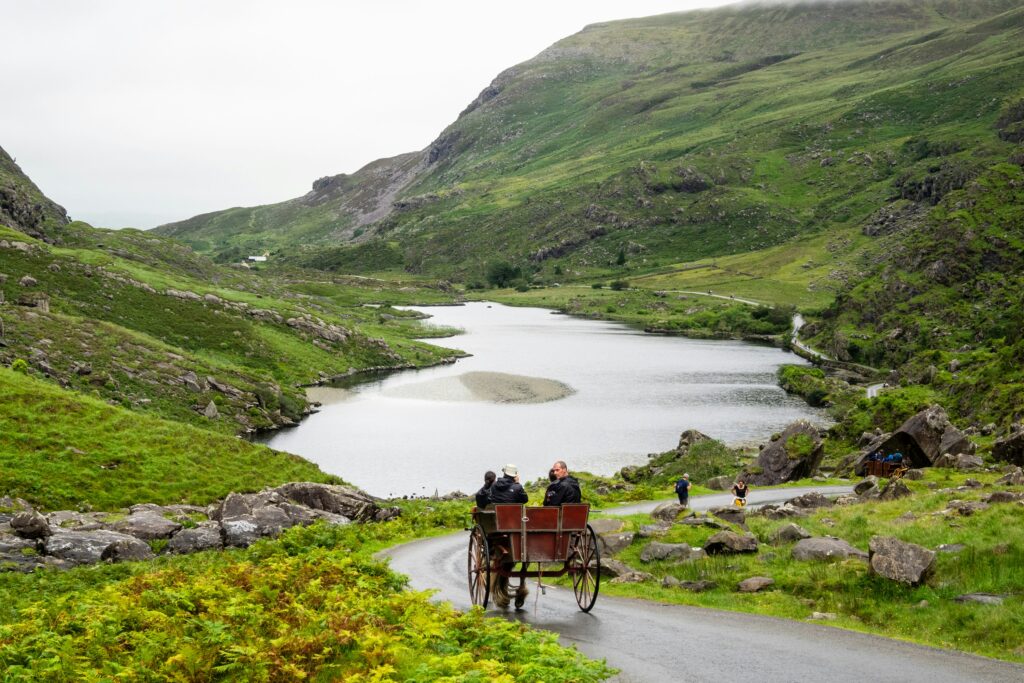
Mark has his patter down to a tee. “See that tree? It’s a sycamore. That one? A beech. The small one behind the beech? A son of a beech!” Predictable, but delivered in his Kerry twang, and it’s impossible not to respond. We drive past sitting red deer, Ireland’s only wild herd, and pass some smaller Sika deer crossing a shallow river. The river is barely ankle deep – South-West Ireland in May should be lush, but it has hardly rained for a month. This will have consequences for us later in our journey.
Eventually Mark drops us off at Ross Castle. A typical Irish square tower house, it was built by the O’Donoghue clan in the late 1400s. Ireland at that time was a lawless and divided place, with little in the way of central government authority. Every local aristocratic family fortified to protect themselves from their neighbours. Irish Castles tend not to be on the scale of castles in most other European countries – they were family affairs, designed to protect from endemic unruliness and cattle rustling, not to withstand sustained attacks. Ross Castle is one of the best preserved of the hundreds that dot the countryside. It sets itself apart from its brethren with its location at the edge of Killarney’s spectacular lakes, and with views up to Ireland’s highest mountains, the McGillicuddy Reeks. It has a jetty, and from this my companions and I board a distinctly wobbly, low-sided motorboat, captained by Feargus and his first mate boat dog, Brian.
We cast off, and the peat-dark waters of Lough Leane glide past below us. The prow of Feargus’ speedboat churns the water into white, creating the dark-light effect of boating on a huge pint of Guinness. The taciturn Feargus deposits us on the small island of Inishfallen, on which lie the ruins of one of the most important monasteries in Ireland. Much of what we know of early medieval Irish history comes from the records that the monks here wrote. It is a special place, with deer grazing between the stone remains. Many of the architectural features of the roofless ruins are remarkably well preserved. I begin to understand why Irish monks felt that the best way to get close to God was to live in a place like this.
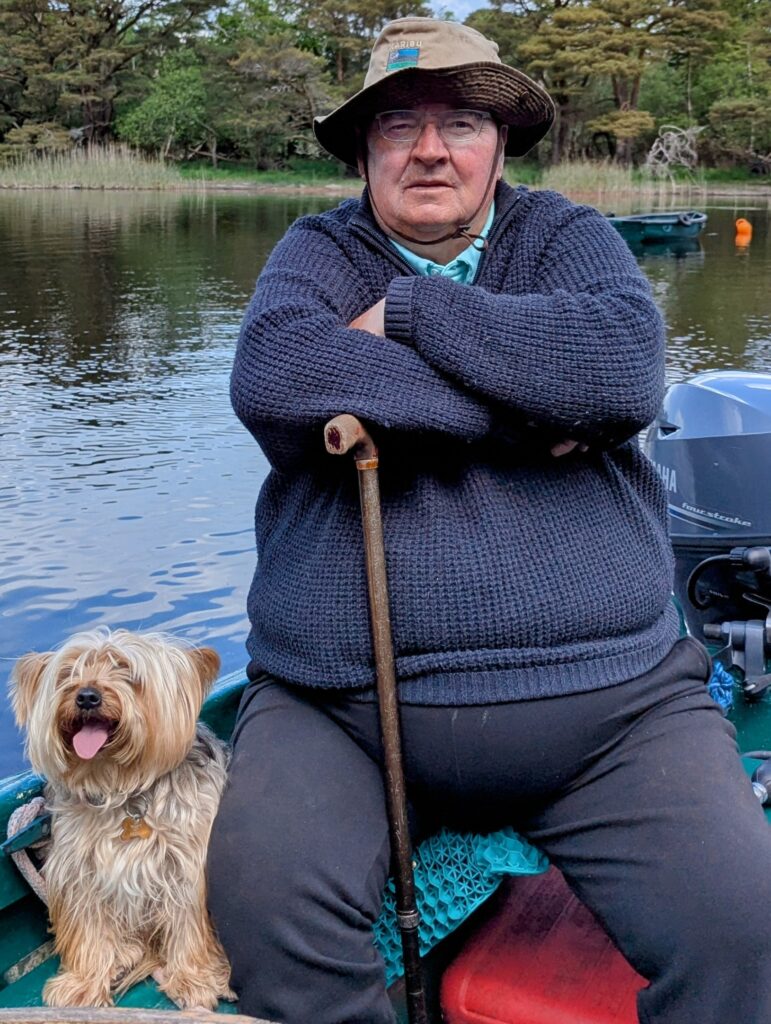
Rejoining Feargus and Brian, we travel towards Muckross House. The we leave Lough Leane and enter into the smaller Muckross Lake. We run aground on the narrow (and, as it turns out, very shallow) channel between the two lakes. Surviving this, we alight on a jetty a short work from one of Ireland’s most beloved stately homes. As we stroll up, we pass more deer, who are picking at the flowerbeds around the house. The lawns slope up above the lake, and the house, as Jane Austen might say, commands a fine prospect. On this journey, we have had plenty of insights into Ireland’s medieval past. Now we glimpse Ireland in the British-ruled nineteenth century, with all its wealth and inequality.
Built by the Herbert family, the house exemplifies the luxury enjoyed by Ireland’s aristocracy during the later years of British rule. The Herberts were of Welsh extraction but had been in Ireland for centuries. Their spectacular new house, built for Henry and Mary Herbert, was completed in 1843. This was just two years before devastating famine broke out in Ireland. The contrast between the Herberts’ wealth and the precarity of their tenants could not have been clearer. It was this contrast that drove the accelerating discontent that eventually erupted into the Irish War of Independence, decades later.
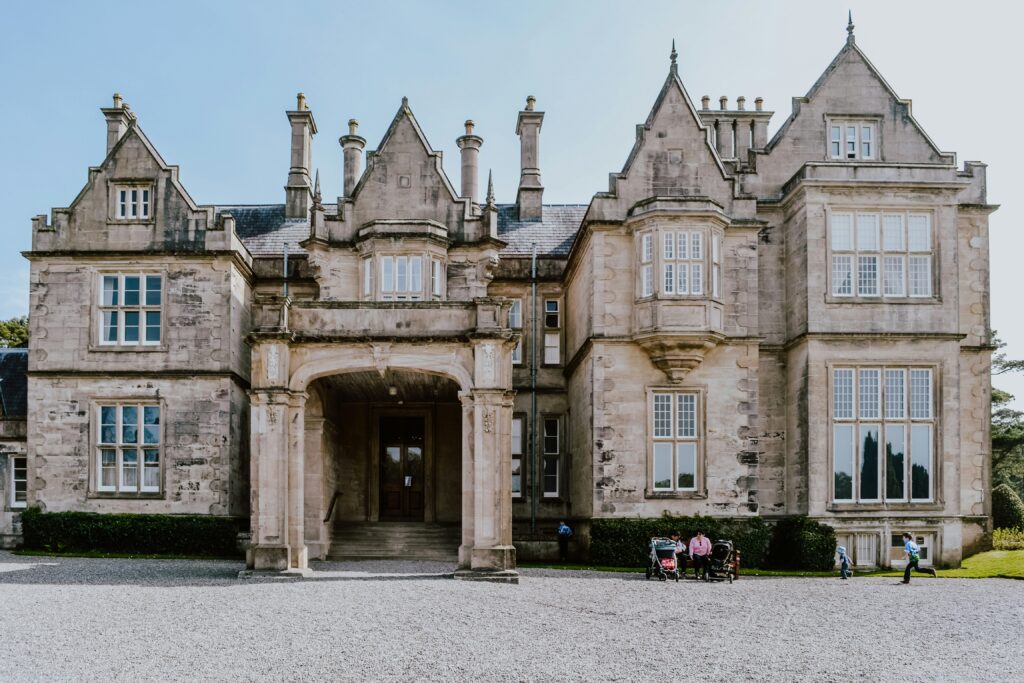
The Herberts extensively remodelled the house ahead of a visit by Queen Victoria in 1861. Henry Herbert had organised the visit in the hopes of an elevation to the peerage. Unfortunately, after only a few short days the Queen left Muckross to return to England, after hearing that one of her children was ill. The Herberts remained mere commoners (Henry was a member of parliament) and their finances, over-extended by the building works, deteriorated throughout the rest of the century. In 1898, they were forced to sell their mansion. Their attempt at social climbing had led to ruin. Muckross House passed through a few more owners before ending up in the possession of the now-independent Irish state in 1932. The decline of the aristocracy that made such a house possible mirrored the transition to an independent and more egalitarian Ireland.
Finally, the way back to Killarney is on an ancient London bus that has been repurposed into a hop-on-hop-off service. Sitting at the front of the top deck, I examine the London advertisements, 20 years out of time and hundreds of miles out of place. They make a striking contrast with our surroundings of deep green temperate rainforest, luxury hotels. The Killarney traffic, however, is only marginally less chaotic than that of London. Despite this, Killarney’s history, landscape and characters justify its fame – it’s lucky for the only-slightly-more adventurous visitor that most tourists don’t take make the effort to explore out of the town.

